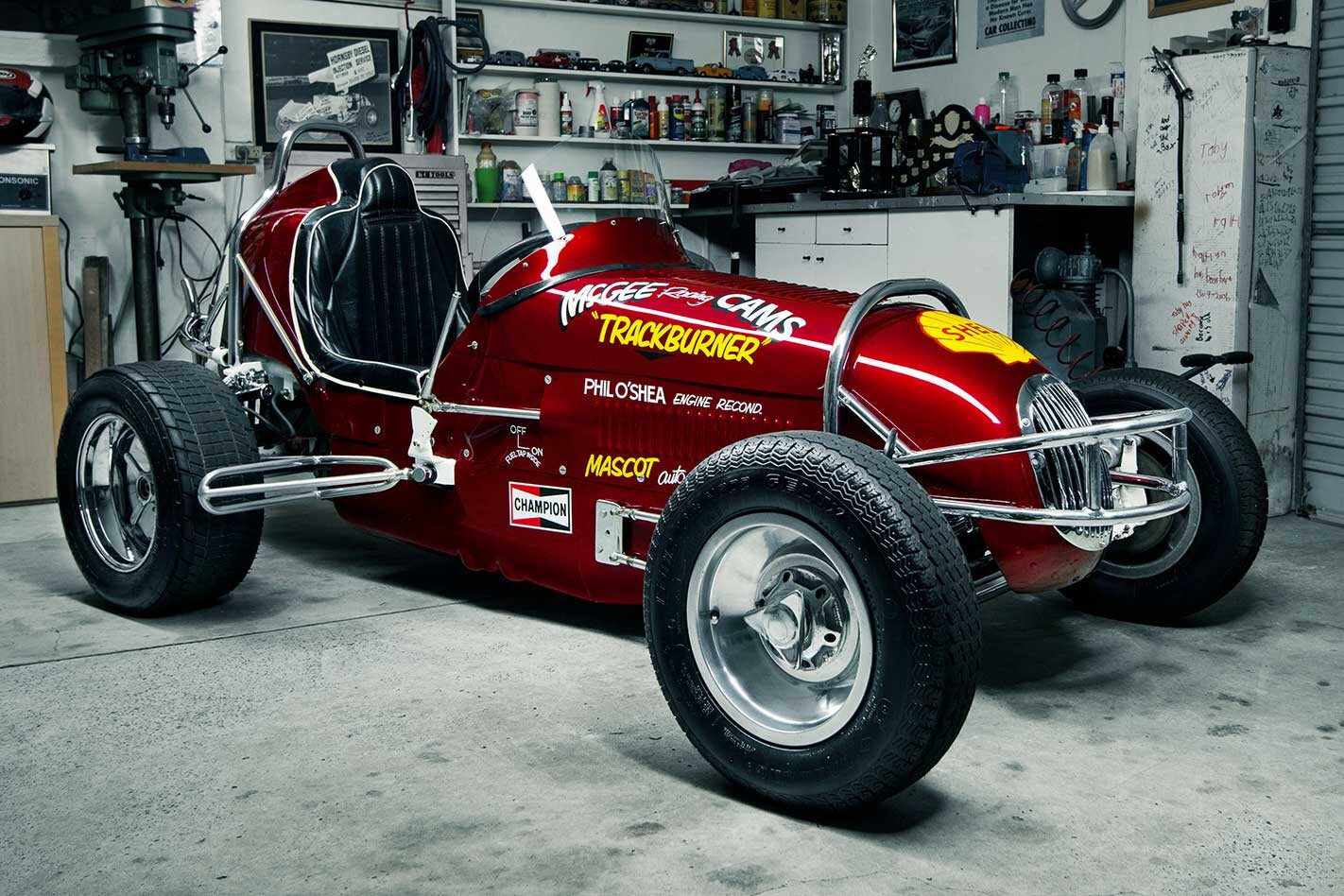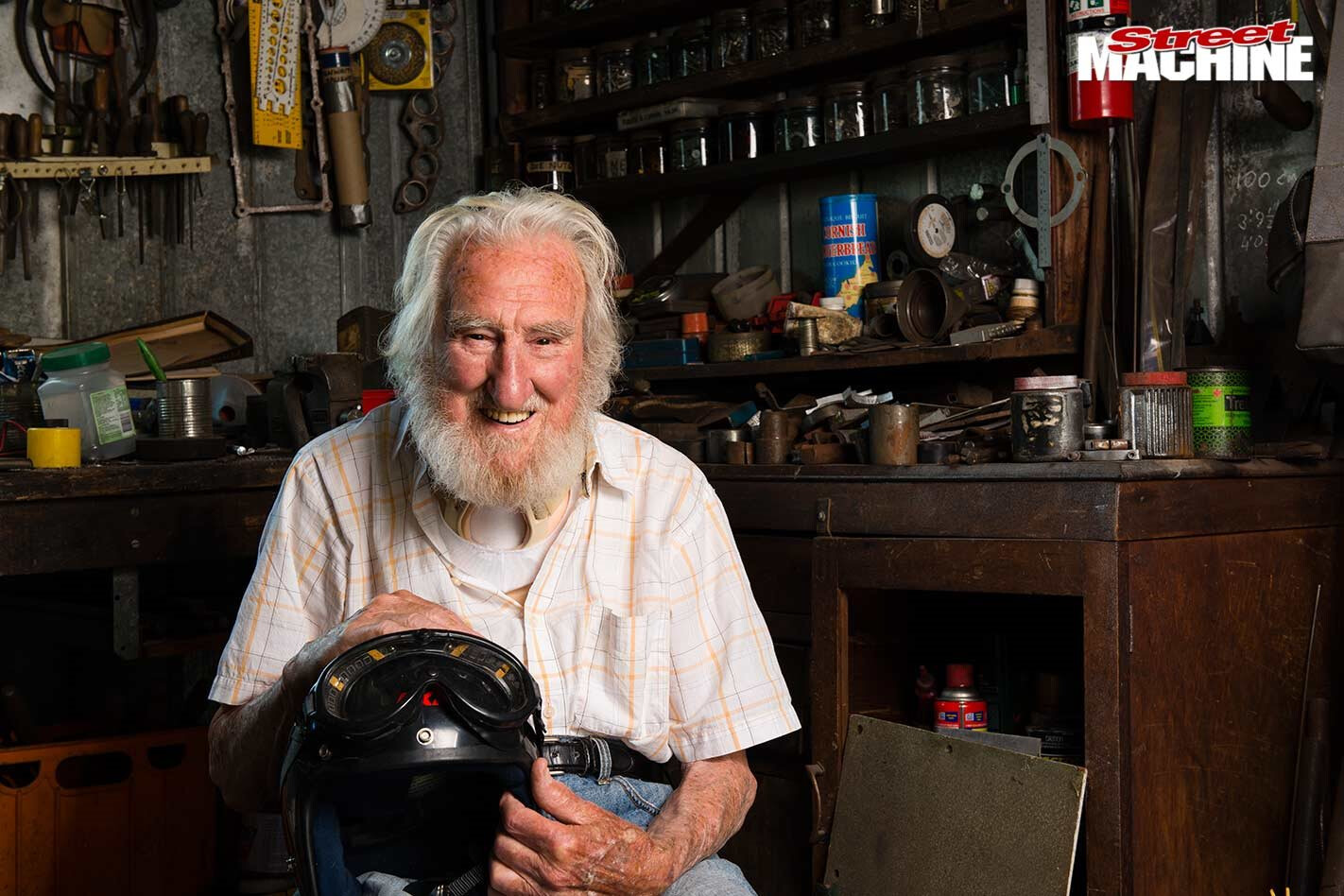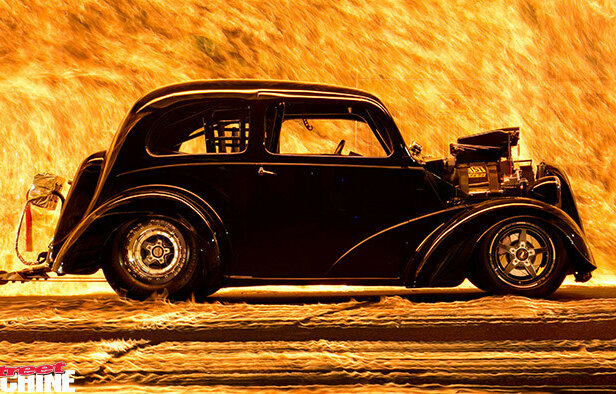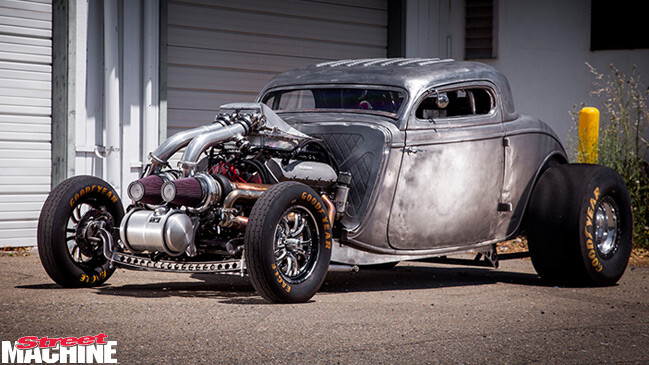This article was originally published in the issue 11 of Street Machine’s Hot Rod magazine, 2013
AUSSIE motorsport has seen many legendary combinations of man and machine – Peter Brock and his XU-1, Dick Johnson and his XD, Ron Harrop and his Harrop’s Howler FJ, and SM’s own Victor Bray and his ’57 Chev. One such pairing revered in the speedway world is that of Johnny ‘Super’ Stewart and his midget speedcar, the Shell Trackburner.
Fifty years ago, the dirt track was the place to be. At the peak of this golden era of local motorsport, it was common to have crowds of 40 to 50,000 pile into the big city speedways – Sydney’s Liverpool, Royale and Westmead tracks, Brisbane’s Ekka, and Melbourne Tracey’s Speedway – to cheer on their heroes. Australia’s speedway scene in the 50s and 60s was a melting pot of action, thrills and sometimes deadly spills. Drivers like Johnny Stewart were daredevils, pushing themselves and their machines to the brink and beyond, showing guts and grit that far exceeded any real consideration for safety.
The beautifully detailed grey motor features a swag of period hot-up items including McGee direct port fuel injection. “The rare McGee oil filler cap came from the local scrap merchant. He would see the car at my business premises and one day he walked in, said, ‘Here you go,’ tossed me the cap and walked out. I was gobsmacked!”
The union of Stewart and the Trackburner was one formed more by fate than intention. John was an accomplished stock car driver operating as a gun for hire, steering cars for various owners. The Trackburner had been around the midget scene in a number of guises since the late 50s. South Australia’s Vic Cerche was a pilot and an avid speedway fan who often flew in new planes from the US for delivery. Sufficient ballast was needed to ensure a safe journey, which provided an opportunity for Cerche to freight in speedway engines and chassis. In 1958, he built himself a scalloped midget running V8-60 power, which was to be the first incarnation of the Trackburner.
Cerche campaigned the car for a couple of years before selling it to Sydney team owner Don Mackay. Mackay slotted famed Aussie driver John Harvey (long before his time as Peter Brock’s right-hand man) behind the wheel, but its first outing proved to be a non-event, with the car failing to perform. The diminutive V8-60 donk was swapped out for Holden grey power, which was the affordable local alternative to the mighty Offenhauser. A few suspension tweaks and a repaint saw it returned to a competitive state, with Harvey taking the wheel for race meetings in Australia and New Zealand.
Rear wheels were custom made to mimic the originals, while the eight-inch racing rubber was recreated using recapped original tyre carcasses that were regrooved to suit
The car was then sold to Victorian driver Aub Cherry, who campaigned it for another two years before it hit the market again in ’64. “John Stewart bought the car for 750 quid,” says Trackburner restorer and current owner Roger Jenkin. “He picked it up from Aub in Victoria on the Friday, drove straight back to Sydney and won the feature at Westmead Speedway that weekend. It was the first owner-driver car for John and he wasted little time making his mark.”
The gorgeous candy apple red paint is on its third respray and features the exact signwriting from Johnny Stewart’s heyday. The straight through exhaust produces a fantastic sound from the worked grey Holden 6
In a colourful career, Stewart notched up three National Championships from 1966-68, as well as various state titles and numerous feature race wins. Earning the #1 spot sparked a makeover for the midget, which included fresh candy apple red paint, high-end sponsorship markings and official Shell Trackburner livery. “John was a showman and a perfectionist in every facet of his life; his clothes, hair and vehicle presentation were top-notch, and he always did the right thing by his sponsors,” says Roger. “The Shell cowboy hat that he donned whenever the helmet was off became just as famous as him.”
Adding to John’s larger-than-life public persona was his knack for surviving horrific wrecks then having the car rebuilt and back racing within the week.
The sparse cockpit is all business with the ignition and dogbox lever close at hand. The two chrome levers adjacent to the cowl are a brake lever on the left side, while the right allows the driver to twist the chassis and load the left rear wheel for additional traction
When John retired from racing, the Trackburner was sold to the Tatnell brothers, George and Joe, who campaigned it for a few years before stepping up to an Offy. George summed up ‘Super’ Stewart with this famous quote: “To be a speedway champion you need four ingredients: showmanship; talent and skill; good equipment; and guts and determination. A man who had all this and more was three-times National Speedcar Champion Johnny Stewart”.
Roger Jenkin was a Sydney lad in short pants when he first saw Stewart race, and has fond memories of the golden years of dirt-track racing. “It was a real family outing for us to head to the speedway on a Saturday or Sunday. The drivers were larger-than-life heroes who all had plenty of fans. We went to Surfers Paradise for a holiday in the mid 60s and went to a meeting at the speedway. Johnny won the feature that night but clipped tyres with another car on the slowdown lap and rolled badly. I can clearly recall seeing a bloodied John loading his car onto the trailer for the trip home and being in awe at how tough this generation of blokes were.”
Though Roger was never in a position financially to own or drive a car back in the day, he has long been a member of the NSW Vintage Speedcar Association and the Historic Speedway Association of Australia, and shares the passion with a number of close friends and relatives. “It wasn’t like I didn’t attempt to score a drive back then; I used to hang around the pits enough to try and get into one,” he laughs. “But it was an expensive sport and not really affordable on apprentice wages.”
Memories of Johnny Stewart and the Trackburner were never far from Roger’s mind, and by the early 80s he was in a position to begin a midget restoration. “A fellow club member knew that the Tatnells still owned most of the Trackburner and I was able to purchase the chassis, tailpiece, steering, suspension, dogbox and nose, along with important pieces such as the front Halibrand wheels and some of the original body panels. The original grey motor had been superseded by one with a Repco crossflow head, but thankfully the vintage speedway scene is a tight-knit bunch; I was able to source the McGee injection and a donor motor to build it as John had raced.”
With Roger’s son Scott and good mate Brian Forest on board, work began in earnest to restore the Trackburner to its former glory. “Some of the body panels had been replaced with fibreglass, so we recreated those in aluminium and basically fabricated anything else we needed such as the exhaust and crash bars. We were lucky to have a number of photos and magazines to work from that provided plenty of specifications and intricate details.”
Original photographs and literature were key to ensuring a correct restoration. With many different images of a bent and battered Trackburner doing the rounds, it’s amazing that both the car and driver were able to return to the track with such regularity
The 138 Holden donk was rebuilt as close as possible to these specifications, which includes a 3 1/8in stroke crank and 3 3/16in bore, filled with 179R Weslite pistons for an 11.6:1 compression ratio. The original Wilkinson gasflow cylinder head survives but was unable to be purchased, so one of a similar specification was prepped featuring larger valves and porting. This is, of course, fed by the McGee direct port methanol injection with a Vertex magneto providing plenty of spark. The engine is backed by a single-speed, direct-drive dogbox and a Halibrand quick-change rear end. Custom made rear rims and regrooved original-style 8in Goodyear tyres compliment the original Halibrands up front.
John Stewart’s post-crash comments sum up the character and larrikin streak of an Australian legend: “I think that was my best crash so far…”
Braking was very advanced for its time, using a four-wheel disc system. “When John ran the car he relied on a hand lever to apply the brakes, however, the Tatnells fitted a foot pedal to suit their needs. We’ve kept the foot pedal purely to improve the cars functionality, and it’s really the only deviation from the original layout.”
The body was treated to coats of stunning candy apple red enamel to keep the car looking period, while the signwriting was completed by the same artist who tackled the work back in the 60s, Allan Bongers. The rebuilt Shell Trackburner has been a star attraction at many vintage speedway meets and displays for close to 30 years and has actually just received its third restoration to maintain its pristine appearance. “Even as a demonstration vehicle, racing on clay with other cars and the corrosive nature of methanol still takes its toll, and it’s important to me to keep it looking pristine,” says Roger.
Roger was able to reunite Johnny Stewart with the car, and he was always happy to attend exhibits with the Trackburner and discuss the good old days with many of his fans. “My wife, Margaret, and I actually became close friends with John and his wife, Dot, right up until their passing in the late 1990s. He felt we’d done an amazing job in restoring the car, which is very humbling. It’s a great feeling to forge strong friendships with your heroes and to know that they’re proud of what you’ve achieved. He was honoured that we’re keeping his name and legacy alive for future generations.”
SHELL TRACKBURNER 1958 MIDGET SPEEDCAR
ROGER JENKIN
Colour: Candy Apple Red
ENGINE
Make: Holden 138 grey
Intake: McGee direct port fuel injection
Head: Holden cast steel, ported
Crank: Holden 3 1/8in stroke
Pistons: Weslite 11.6:1
Camshaft: McGee
Ignition: Vertex magneto
Exhaust: Custom headers into single side pipe
DRIVELINE
Gearbox: One-speed direct drive
Diff: Halibrand quick-change centre
UNDERNEATH
Front: Transverse leaf and four-bar location
Rear: Transverse leaf, trailing arms
Steering: Rebuilt
Brakes: Hand- or foot-operated disc (f&r)
WHEELS & TYRES
Rims: Halibrand (f), Custom (r)
Rubber: Replica race rubber; remoulded and regrooved




Comments